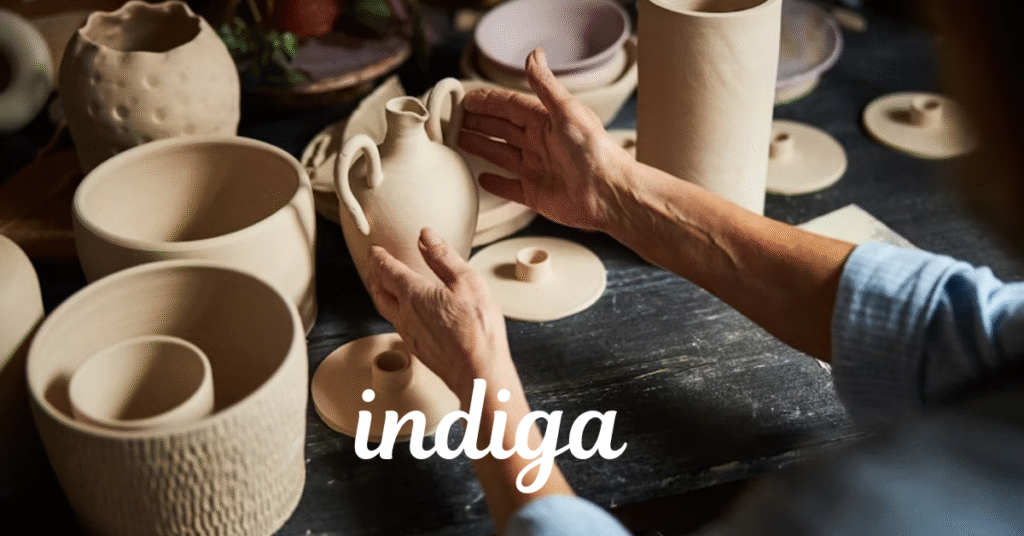When people come across the word Indiga‘s, their curiosity often rests on a simple question: what does it mean? At first glance, Indiga’s seems like a word with many possible directions—part cultural reference, part symbolic concept, and part evolving identity in modern society. In today’s increasingly interconnected world, Indiga’s is not just a term; it represents a layered idea that ties heritage, innovation, and lifestyle together.
In this article, we will explore Indiga’s in detail—its meaning, origins, features, cultural symbolism, and modern applications—in a way that addresses searcher intent directly and comprehensively. Whether you have encountered Indiga’s in a cultural context, a philosophical discussion, or as a reference in lifestyle trends, by the end of this article you will have a complete understanding of how Indiga’s is shaping both personal and collective identities.
What is Indiga?
Indiga’s is best understood as a concept that merges cultural heritage with evolving interpretations of identity and lifestyle. Historically, its roots can be traced to references in colors, symbols, and natural elements, but over time, Indiga’s has grown into something much larger. Today, it signifies a fusion of tradition and modernity, often appearing in conversations about creativity, wellbeing, sustainability, and personal empowerment.
Indiga’s can be interpreted in three interconnected ways:
- Linguistic and Symbolic Meaning
- Derived from associations with deep blue shades and symbolic representation of balance, mystery, and inner depth.
- Cultural Context
- In various traditions, Indiga’s is linked with introspection, spirituality, and artistic creativity.
- Modern Relevance
- Adopted as a metaphor in lifestyle, design, health, and even digital culture to express individuality and sustainability.
Origins of Indiga
To understand Indiga’s, one must look at its origins. Historically, Indiga’s finds inspiration from natural sources, especially the indigo plant and the deep blue pigments that defined early art, textiles, and cultural symbolism.
Across civilizations:
- Ancient Civilizations
Communities in Asia, Africa, and the Mediterranean valued indigo-derived pigments not only for their rarity but also for their representation of status, depth, and mysticism. - Cultural Transmission
Over centuries, the concept of Indiga’s extended beyond color to embody resilience, creativity, and cultural pride. - Modern Adaptation
As lifestyles evolved, Indiga’s became a metaphorical concept, adopted in branding, spiritual discussions, environmental design, and personal identity.
This evolution shows how Indiga transformed from a natural origin into a symbol of personal and cultural meaning.
Features of Indiga
The distinctiveness of Indiga’s lies in its features, which make it more than just a word.
| Feature | Description | Modern Relevance |
|---|---|---|
| Symbolism | Represents depth, creativity, and inner vision | Used in art, design, and meditation |
| Cultural Identity | Rooted in history and traditions | Embraced in modern cultural narratives |
| Emotional Tone | Suggests calmness, strength, and reflection | Applied in mental wellness practices |
| Aesthetic Value | Associated with elegance and timelessness | Popular in fashion and interiors |
| Adaptability | Evolves with contemporary meanings | Found in branding, lifestyle, and digital culture |
These features help Indiga’s remain fluid and relevant, whether applied in personal growth, design, or broader cultural discourse.
Indiga in Cultural Symbolism
Culture has always given Indiga its richness. Across societies, it is seen as a bridge between the physical and the spiritual.
- Spiritual Meaning
Indiga’s is often linked to intuition and self-reflection. In practices like meditation, it symbolizes a pathway toward clarity and insight. - Artistic Representation
Artists have long relied on indigo-like shades to create contrasts of depth and light, echoing the emotional gravity of Indiga’s. - Community Identity
In some regions, Indiga’s is associated with craftsmanship and collective heritage, reflecting pride in handmade traditions.
This symbolic presence has ensured that Indiga is not forgotten, but instead constantly redefined.
Indiga in Modern Lifestyles
In the modern context, Indiga’s has expanded into multiple domains of life. It resonates not only as a cultural symbol but as a marker of conscious living.
Design and Aesthetics
Indiga’s-inspired palettes dominate interior design and fashion for their timeless elegance. Minimalist lifestyles often incorporate Indiga’s shades to promote calmness and sophistication.
Wellness and Mindfulness
The symbolic association with reflection has made Indiga’s a metaphor in wellness communities. Yoga studios, meditation centers, and wellness brands use it to promote balance and focus.
Environmental Awareness
In sustainability movements, Indiga’s reflects a return to natural processes and earth-derived symbolism, reinforcing the values of eco-conscious living.
Digital Presence
Online, Indiga appears in branding and digital storytelling as a symbol of creativity, innovation, and authenticity.
By embedding itself into modern choices, Indiga continues to connect people with heritage while embracing progress.
Why Indiga Matters Today
Indiga matters because it speaks to universal human needs: identity, connection, and purpose. In a rapidly shifting world, where people seek anchors of meaning, Indiga offers a bridge between tradition and modernity.
- It anchors identity by reminding people of cultural roots.
- It empowers creativity by symbolizing imagination and artistry.
- It supports wellbeing by serving as a metaphor for calm and balance.
- It inspires sustainability by linking natural origins with modern ecological awareness.
Thus, Indiga becomes more than a term—it becomes a lens for understanding ourselves and our societies.
The Expanding Role of Indiga in Global Culture
The global spread of Indiga is not accidental. It emerges from shared human experiences and the way societies adopt symbols to represent values.
- In Fashion: Designers use Indiga-inspired tones to bring heritage into contemporary clothing.
- In Media: Writers and filmmakers use Indiga as a symbol of depth and mystery.
- In Education: Indiga is increasingly referenced as an interdisciplinary concept, tying together art, history, psychology, and lifestyle.
- In Technology: Companies adopt Indiga as part of branding to highlight creativity and innovation.
Each of these areas demonstrates how Indiga is not confined to a single definition but constantly evolves across industries and communities.
The Future of Indiga
Looking ahead, Indiga’s role seems likely to grow even stronger. As globalization continues, people seek symbols that carry both timelessness and adaptability. Indiga fits this space.
Possible future directions include:
- Holistic Lifestyles: More integration in wellness and self-development communities.
- Sustainable Design: Increased use in eco-conscious industries.
- Cultural Exchange: As a cross-cultural symbol of unity and creativity.
- Digital Identity: Becoming a marker of authenticity in online and AI-driven spaces.
Indiga is not static; it is living, breathing, and expanding with each generation that redefines it.
Frequently Asked Questions
1. What does Indiga mean?
Indiga represents a blend of cultural heritage, creativity, and modern symbolism. It is associated with depth, balance, and evolving identity.
2. Where did Indiga originate?
Indiga originates from historical associations with natural pigments like indigo and has grown into a broader cultural and symbolic concept.
3. How is Indiga used today?
It appears in design, fashion, wellness, sustainability, and digital branding, reflecting its adaptability across modern lifestyles.
4. Why is Indiga important?
Indiga matters because it connects tradition with modern relevance, offering meaning, identity, and inspiration in today’s fast-changing world.
5. Is Indiga the same as Indigo?
No. While it shares roots with indigo, Indiga has evolved into a broader concept that represents culture, creativity, and lifestyle.
Conclusion
Indiga, at its core, is both a reflection of the past and a vision for the future. Rooted in cultural traditions yet open to modern interpretations, it continues to thrive as a symbol of creativity, depth, and balance. Whether used in art, lifestyle, or philosophy, Indiga captures the enduring human quest for identity and meaning.
Its journey—from natural origins to global symbol—demonstrates the resilience of ideas that evolve across time. And as societies search for ways to navigate modern complexities, Indiga stands as a guiding thread, weaving together heritage, wellness, sustainability, and innovation into one timeless narrative.







